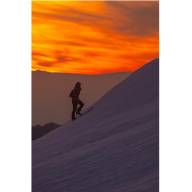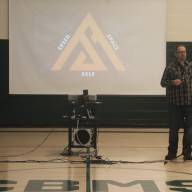On Friday, April 5, from 5 to 7 p.m., the North Branch Nature Center (NBNC) in Montpelier will host a book launch for Vermont educator Amy Butler’s new book “Educating Children Outdoors: Lessons in Nature-Based Learning.” Published by Cornell University Press in March, it features narratives written by Butler and over 20 public school teachers – including several from The Valley, about facilitating outdoor education.
The book also offers curricular guidance on lessons that align with K-12 education standards, and moves through a host of practical information – like dressing for all types of weather and navigating outdoor bathroom use. Montpelier-based artist and author Nick Neddo illustrated the book. His work will be on display at Friday’s reception.
The ethos of Butler’s method involves giving kids agency to explore outdoors, essentially allowing them to guide their own learning. Educators can track what kids get curious about and find ways of applying curricular standards from there – rather than the other way around. In that sense, she refers to both the students and the lifeforms that inspire their learning – like worms and slug eggs, as ‘co-teachers.’
“She is truly an amazing educator,” Moretown Elementary School administrative assistant and former longtime teacher, Brenda Hartshorn said of Butler.
Butler worked as the director of education at NBNC from 2010 through 2023. She founded the organization’s flagship program, ECO, and worked across 10 central Vermont public schools, visiting classrooms weekly and offering half-day or full-day outdoor instruction. The students called her Ms. Coyote.
The ECO program became popular, and to meet the demand, NBNC grew their staff from three to 17 employees who could facilitate nature-based learning in public schools – including at Moretown, Waitsfield and Warren Elementary Schools.
Previously, Butler studied elementary education with a focus on science, attended forestry school and worked as a special education teacher at Twinfield Union School in Plainfield.
She said that some of the barriers to offering outdoor education in public schools include a lack of access to proper outdoor gear, and the difficulty that schools have in blocking off longer periods of time for kids to be outside.
There can also be a lack of access to safe outdoor spaces, Butler said. In the book, she writes about a student who hesitated to play in the woods because she understood such spaces to contain harmful objects like discarded needles – remnants of the opioid epidemic in her town.
Butler takes up safety issues in the book, but ultimately advocates for the importance of giving students the chance to take risks. She recalled working with a group of kindergarten students at Warren Elementary School who made tea on an outdoor fire pit each week. Collecting wood, steeping herbs, and passing cups around gave them a sense of agency, Butler said, and the element of fire presented a sense of risk that caused them to bond.
“A big part of this is the social-emotional learning that’s happening for kids in an unbounded space, where community is created and they’re able to feel safe,” Butler said. “You just can’t replicate what happens outside when you’re within the four walls of the classroom.”
You might also like













